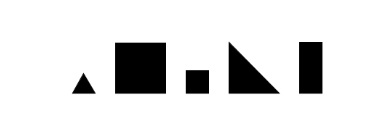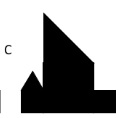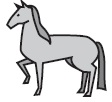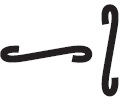FREE CAT4 Non-Verbal Reasoning Test Question and Answers




Explanation:
This series relates to how many sides each figure has. The three figures in the first section have one side, two sides, and finally three sides. The number of sides grows and then decreases in the second segment. The number of sides continues to decline in the third section.
Select the image that would fill the empty space so that the lower two images are connected in the same way as the top two are.





Explanation:
A canoe's oar is equivalent to a car's steering wheel. This connection has a purpose. Similar to how a car's steering wheel directs the automobile, an oar aids with canoe steering.


Explanation:
Examine every section. You'll see that in each, the figures on the right and left are identical, but the figure in the middle is different. The diamond on the left will be replicated on the right to keep this pattern going in the final section. The only solution is Option B.
Select the image that would fill the empty space so that the lower two images are connected in the same way as the top two are.





Explanation:
As a spool of thread is to a sewing needle, a paint can is to a paintbrush. This is a functional relationship. Both depict the equipment required to do a task.
Which one of these shapes cannot be made with the parts listed below?





Explanation:
You must be able to mentally manipulate and rotate the forms to see them inside each of the answer shapes in order to correctly answer this question.
The right response, which omits the rectangle and makes use of two tiny squares, is C.





Explanation:
Take note of how many dots are on each domino. From five to three to one in the first segment. From one through three to five is covered in the second segment. The first portion is repeated in the third.





Explanation:
The same geometric shapes—two squares, one circle, and one triangle—are used in all four portions. The squares are outside of the circle and triangle in the first segment. The squares in the second segment are below the other two. The squares on the third segment are on the inside. The squares are positioned over the triangle and circle in the fourth segment.



Explanation:
Think of these arrows as the large hand on a clock; the first arrow is at noon, the last arrow before the blank would be 12:40.
Select the image that would fill the empty space so that the lower two images are connected in the same way as the top two are.





Explanation:
As cheese is to butter, so are grapes to pears. This connection demonstrates the classification or grouping to which something belongs. Fruits like grapes and pears are dairy products like butter and cheese.




Explanation:
Analyze the pattern thoroughly. Two letters in the initial segment face right, followed by two facing left. The second segment's first letter is a repetition of the previous segment's final letter. The third section is the same way. The final two letters must face right because the fourth segment is the opposite of the first.





Explanation:
This is a sequence that alternates. The letter "E" is facing right, then down, then right in the first section. The letters in the second section are all upside-down. The fourth segment's letters must all be upright in order to continue this pattern.
Select the image that would fill the empty space so that the lower two images are connected in the same way as the top two are.





Explanation:
As the head is to cap, the hand is to ring. A person wears a ring on their hand, and they cover their head with a hat.
Select the image that would fill the empty space so that the lower two images are connected in the same way as the top two are.





Explanation:
As pine trees are to a log home, sheep are to a sweater. A sweater is made of wool from a sheep, and a log home is made of wood from trees.





Explanation:
The dark area inside the circle gets bigger and smaller in this sequence.





Explanation:
The circle's shaded area grows larger and bolder in this sequence. While the figures in each segment have the same general shape, the one in the middle is larger than the ones on either side. The shading on one of the figures switches between the right and left figures, as you can see. You need to find a square to carry on with this pattern in the third section. The huge square will be positioned between the two smaller squares in this decision, with the shading on the right side being smaller. Therefore, choice D is the best option.





Explanation:
Look for contrasts among the figures in this collection. The first and second segments are diametrically opposed to one another. The third and fourth parts share the same characteristics.